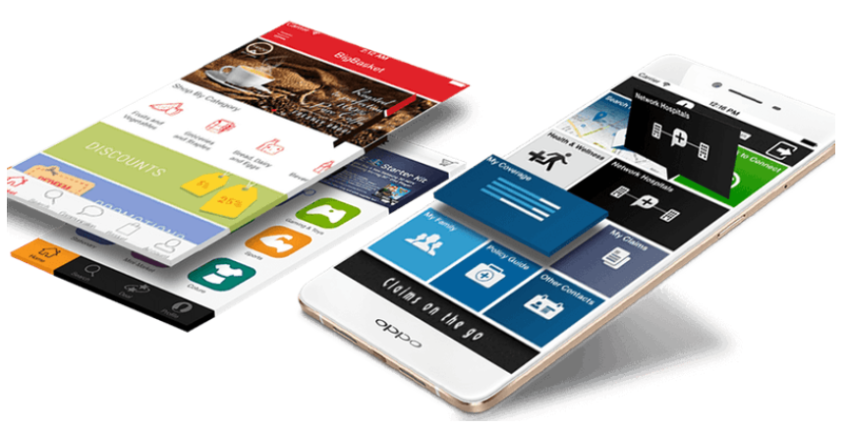Did you know that a recent report from McKinsey reveals that AI could contribute around $13 trillion to the global economy by 2030? Despite AI’s excitement, many organizations struggle with the complexities of developing AI solutions. This gap highlights the challenges faced in the AI App development cycle, where proper planning, data handling, and model evaluation are critical to success.
Whether you’re an indie developer or a professional mobile app development companies new york, this structured approach will empower you to create AI solutions that meet user demands and drive significant value within the business.
7 Easy Steps to Get Your Own AI App
Below is a clear roadmap for building your AI App from the ground up. But keep in mind that each step comes with its hurdles, which require a good grasp of AI development. Let’s explore each step in more detail.
Step 1: Define the Problem
The process of AI app development starts with finding an issue that you want to solve. A clear and concise problem statement will help you set a foundation for the project. For this purpose, start spotting challenges your organization faces. For instance, you can enhance customer service through chatbots or utilize automation for supply chain management.
Briefly interact with stakeholders in this niche; they can be users, managers, and staff for perspectives. Their feedback will help you to go in the right direction and
Step 2: Collect and Prepare Data
Data collection is one of the most non-negotiable stages in the development of AI apps. The quality of data being used will directly impacts the performance of the AI model. Its better to only high quality data from relevant sources, such as internal databases, public datasets, or third party APIs. Once you have gathered the data, the next step is data cleaning. This involves removing duplicates, addressing missing values, and correcting any inaccuracies to ensure data integrity.
Step 3: Choose the Right AI Techniques
Once you are done with data collection, the next phase is to use the right AI technology to best serve your purpose. There are several existing technologies available, including ML, deep learning, and reinforcement learning, to name just a few.
- Machine Learning: It’s among the most commonly used approaches followed by app creators for tasks like classification, regression, and clustering. Popular ML algorithms include decision trees, support vector machines, and ensemble methods.
- Deep Learning: If your app idea involves image recognition, natural language processing, or complex pattern recognition, it may require a deep learning technique. Neural networks, particularly Convolutional Neural Networks (CNNs) & Recurrent Neural Networks (RNNs), are the best choice for this task.
- Reinforcement Learning: This approach is suited for systems where an agent learns to make decisions based on trial and error, for instance, game-playing or robotic control.
Technology selection may be slightly challenging, requiring niche expertise to make the right decision. For this purpose, it’s better to go for an mobile app development companies new york.
Step 4: Build Your AI Model
It’s time to create and train an AI model. It involves the selection of the right algorithms that fit your data characteristics and problem type. It’s often beneficial to experiment with multiple algorithms to determine which performs best.
Divide data into training and testing sets. The training set teaches your model how to act and perform at different patterns and relationships within the data.
Step 5: Evaluate the Model
It’s paramount for developers to evaluate performance metrics to ensure next level quality standards. They can perform UAT tests to assess how well the model generalizes to unseen data, which helps prevent overfitting. There are several right evaluation metrics available that may be appropriate for your problem, such as accuracy, precision, recall, and F1 score. Don’t forget to conduct cross validation to get further insights into the model’s robustness.
Step 6: Deploy the Model
When you feel your model is perfect and ready to be deployed, it’s time to choose your intended environment. This is entirely up to your needs; you can either go with cloud-based or on-premises services.
Integrating the developed AI model into existing systems or applications is a critical phase; this may involve creating APIs, designing user interfaces, or connecting the model to databases. A perfect integration
Effective integration ensures that users can easily access and utilize the AI solution. Additionally, monitoring tools should be set up to track the model’s performance in real time. This proactive approach allows you to identify and address any issues that may arise during operation.
Step 7: Maintain and Update
The AI App development process doesn’t end with deployment. It’s crucial to maintain and keep up to date for enduring success. The purpose of this ongoing performance monitoring is to specify any degradation or drift in the model’s accuracy along with the time. More than that, it also includes upgrading your data sets with new data to enhance relevance and effectiveness.
Be prepared for change if required. It will help you keep your app updated and refined to meet users’ changing needs.
To Sum Up
The AI App development process is intricate and involves a fair set of challenges that require a strategic approach, an experienced team, and a large number of resources. You either follow this process to start making your own AI App or may outsource this to a high-end mobile app development companies new york to let them handle these laborious tasks while you focus on your core business.
Read More: Swift vs dart which one is better

